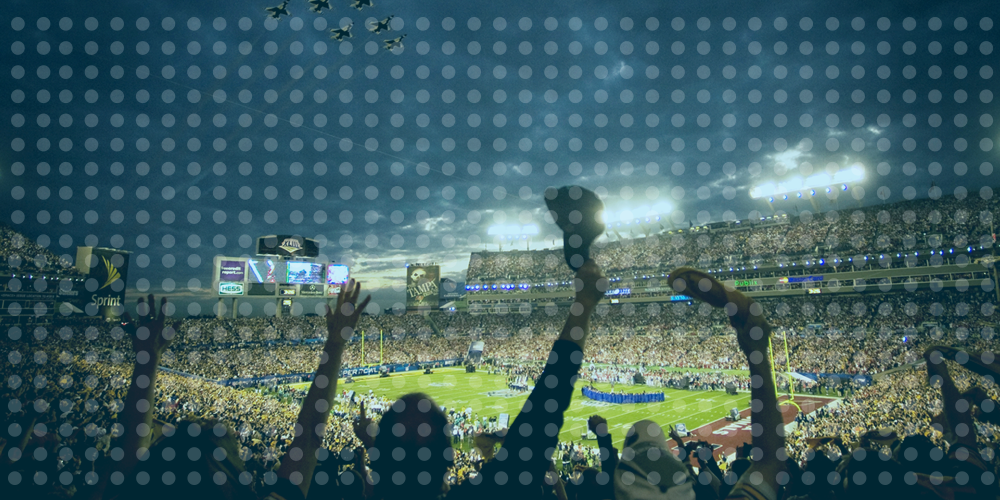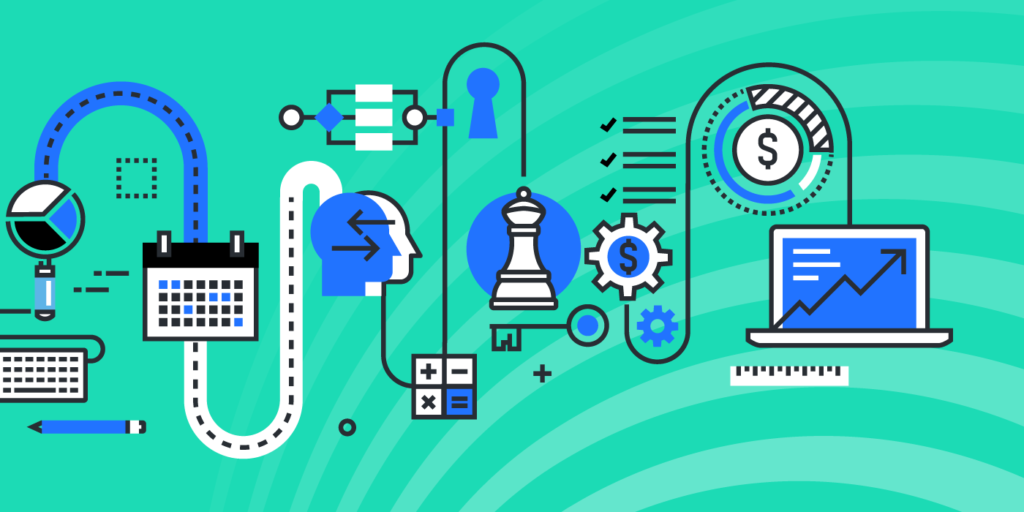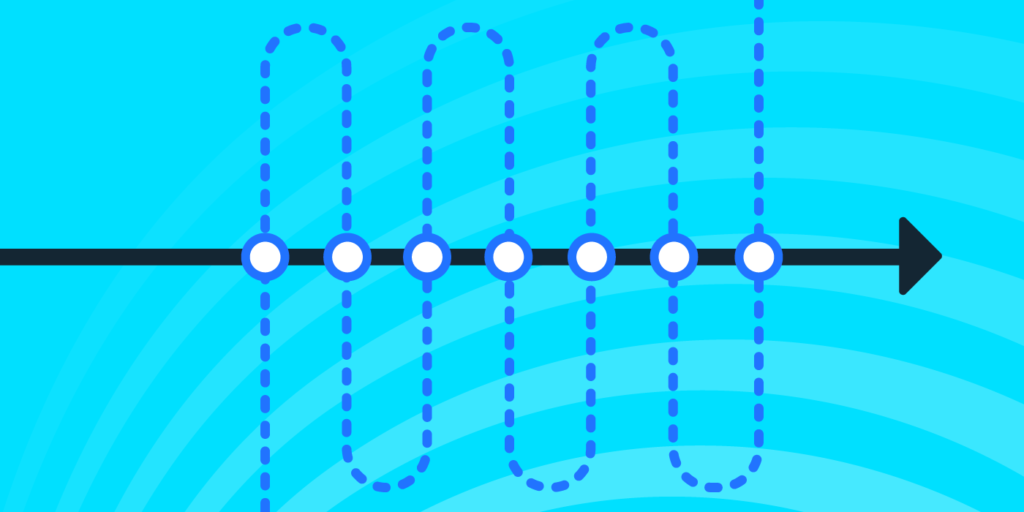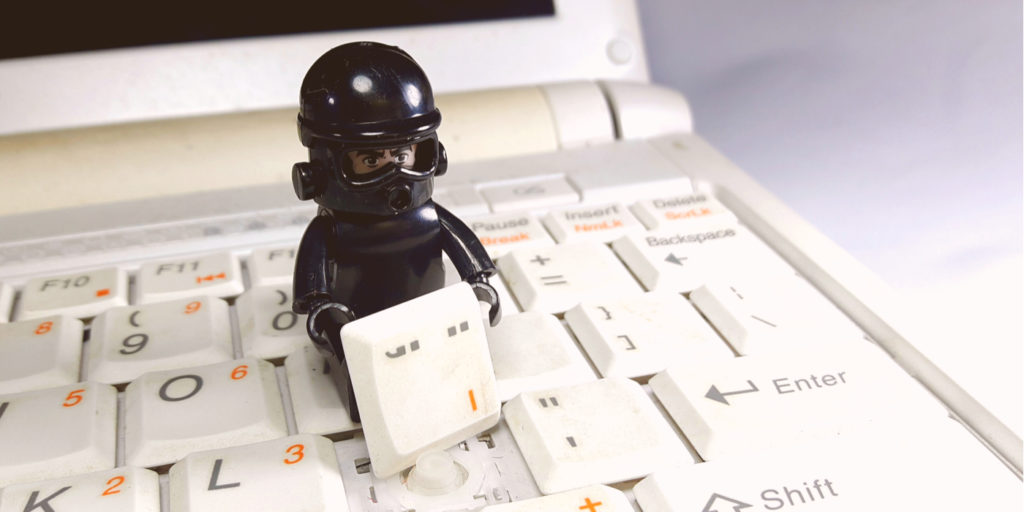Here's How You Provide Wi-Fi for all 70,000 Super Bowl Attendees
February 11, 2016
6 minute read

When 74-year-old Tom Henschel, one of only three known fans to have attended every Super Bowl, stepped inside Levi’s Stadium in Santa Clara, Calif. last Sunday, he likely reflected on his first-ever Super Bowl experience. A lot has changed since 1967. Super Bowl tickets went for $12, the stadium didn’t sell out, and no one logged on to Wi-Fi to send tweets, post pictures, or check out which bathrooms lines were the shortest.
Each year, the Super Bowl is arguably one of the most difficult networking challenges any IT professional will ever encounter. And from all available accounts, it went off without a hitch. But how?
What’s required to successfully serve Wi-Fi to 70,000 attendees?
Now, as an IT professional, the likelihood you’re behind a Super Bowl-sized network is small, but events with 150-15,000 attendees are common and present similar, albeit scaled-down versions of the same challenges. If you look closely, you can learn a lot from the networking best practices on display at the Super Bowl.
Understanding Your Attendees
When you begin planning your event, you want to establish a few things right off the bat. First, how will your attendees use your Wi-Fi?
The network for an NFL football game requires sturdy Wi-Fi capable of handling applications like Twitter, Instagram, Facebook, Snapchat, and Vine–along with basic browsing. Levi’s Stadium even has an application that allows attendees to order food and drinks, watch near real-time HD replays, and check out which bathrooms have the shortest lines.
“For any event, you need to know what your attendees’ primary and secondary Wi-Fi needs are going to be,” says Tim Burke, Director of IT at BetterCloud. “Once you know that, you tailor your network to best serve those users first–everything else gets best effort.”
Estimating Your Base and Peak Load
When New York played host to the Super Bowl in 2014, 3.2TB of data was used during the game, and last year’s event in Arizona recorded a then-record of 6TB. Last Sunday, data consumption exceeded an astonishing 10TB.
It’s safe to say you’ll likely deal with less data consumption. But even smaller events will deal with significant and ongoing data usage, as well as large spikes in traffic.
During the Super Bowl, the peak load is highest at halftime. “That’s when everyone starts sending all the pictures and video they shot during the first half,” said Verizon executive director Phillip French in a recent Re/code article. “That’s what we’re building to handle.”
The peak load at your event may come when the keynote speaker asks attendees to share tweets and pictures with the event hashtag. Or, if you work for a software company, your peak load may hit just after your head of product introduces the latest version of your application.
“If you’re in the SaaS business, the performance of your event Wi-Fi reflects on your product,” says Tim. A slow Wi-Fi experience is nearly indistinguishable from a slow application, he says.
Accurately determining your peak load is difficult, says Tim. “You’re just not going to know how many people are there and you’re not going to know if one guy shows up with a bad Wi-Fi card that has an interference leak on it and screws up your network.” However, despite the seemingly infinite variables, there are steps you can take to make peak load estimations.
Enterprise networking provider Meraki lays out a great equation for calculating your peak load.
“As an example, let’s design a high-density Wi-Fi network to support HD video streaming that requires 3 Mbps of throughput. Based on the capacity of the auditorium, there may be up to 600 users watching the HD video stream. By multiplying the application throughput by the number of expected concurrent users we get the total application bandwidth that is need.”
(Application Throughput) x (Number of Users) = Aggregate Application Throughput
3 Mbps x 600 users = 1800 Mbps
Meraki also provides an equation for estimating the number of access points (APs) needed.
“If you assumed just 1.5 Mbps for HD video chat (as recommended by Skype and Spark) you would need half the number of access points. If you assumed 5 Mbps was required for HD video streaming (recommended by Netflix) you would need more access points. If you were designing to support 600 iPhones instead of 600 high-end laptops, you would need 3 times the number of access points.”
(Aggregate Application Throughput) / (Device Throughput) ≈ Number of Access Points
With these two equations you can identify what you need to create a stable Wi-Fi environment for your event attendees–and remember, not every user will carry just one device.
Creating Acceptable Use and Quality of Service Policies
For most events, you’re going to want to give yourself a 4-8 week window–sometimes more–for planning, according to Meraki. For an event like this year’s Super Bowl, network planning likely began long before the first shovel hit dirt and construction began on Levi’s Stadium in 2012.
But generally speaking, a planning phase of 4-8 weeks will give you ample time to purchase necessary equipment and create acceptable use and quality of service policies. An acceptable use policy will help you determine what’s allowed and what’s not allowed on your network. A quality of service policy lays out how fast certain activities (like streaming video) can run.
Why do you need these policies?
One reason is to provide protection from legal action, and you do that through your acceptable use policy. In any scenario, whether it’s a business conference, Comic Con, or the Super Bowl, you’ll need to draft an acceptable use policy–legalese and all–and include it on your Wi-Fi’s splash page. And if at all possible, keep your splash page small in size to limit strain when people are simultaneously trying to access the Wi-Fi.
Your quality of service policy is for your internal use and serves as a guide for network performance.
“Someone’s going to fire up their laptop with a hundred gigs going off to a cloud backup service, or they’re going to have a hundred gigs downloading from Google Drive. There’s always bandwidth hogs at every event and you have to throttle them,” says Tim. “If not, you’ll have one person taking up the bandwidth of a thousand people and then those other thousand people get a really bad experience.”
Meraki says setting bandwidth limits is likely the most significant consideration of any large event. “If bandwidth limits are not enabled,” the company cautions, “a small number of clients can quickly saturate a channel.”
For example, if your event caters to business executives who will likely use Wi-Fi for work purposes, throttling streaming sites like Netflix during the conference will provide a better experience for the average attendee. However, if your network is built for Comic Con, where streaming services are likely heavily used, throttling them will provide for a bad attendee experience. Again, this goes back to knowing your audience.
Ensuring Geographic Redundancy
Putting all of your eggs in one Wi-Fi basket is risky. For a large event, you’ll want to use multiple internet service providers in case of an outage. “If you can get Level 3, Cogent, AT&T, and Verizon all to land at your event, awesome,” says Tim. But you’ll want to make sure the providers you choose aren’t using the same fiber, he cautions. Sometimes small internet service providers will piggyback on the fiber of large companies, meaning that even though you are paying two companies, you’re really only using one physical network.
Geographic redundancy will “ensure that one clumsy backhoe operator, one localized power outage, or one careless network engineer can’t take out all, or even the majority of your links out to the general internet,” says Tim.
Using Your Venue to Your Advantage
The bigger the event, and the bigger the room, the more difficult it becomes to provide quality Wi-Fi. Wherever possible, use the venue space to your advantage. Levi’s Stadium is an excellent example. “By placing the APs under the seats,” writes Zues Kerravala, founder and principal analyst at ZK Research, “the ground clutter acts as a natural barrier to minimize the interference for the dense placement of the APs.”
For many events, the venue provided setup isn’t enough, meaning you’ll want to bring your own gear, says Tim. Many venues come standard with older and poorly run gear; bringing in your own equipment gives you more control and the ability to provide a better experience. But that doesn’t mean you have to totally start from scratch. “If the venue has cabling, don’t pull your own cabling. Use their cabling. Bring your own gear, bring your own bandwidth, bring all that, but you don’t have to totally reinvent the wheel as you’re doing it,” says Tim.
Finding Your Dead Zones
Levi’s Stadium, which sits in the heart of Silicon Valley, is one of the most high-tech stadiums in the world. Hidden underneath the stadium seats are 1,300 of Aruba Networks 802.11ac APs. From their seats, attendees are never more than 10 feet from the nearest node.
Unlike Levi’s Stadium, it’s likely that you’re going to encounter some dead zones at your venue. For BetterCloud events, Tim uses Ekahau, a Wi-Fi network optimization planning tool, to identify areas where the signal is sparse. Ekahau will help you determine where–and how many–APs are needed.
Building a Secure Network
This year’s Super Bowl was said to “very likely” attract cyber threats, according to the FBI, but even a smaller event can be a target.
You need to make sure you set up a secure network along with your guest network. Your secure network is for things like checking attendees in on iPads, credit card transactions, or your corporate wireless network.
Each network you set up needs its own wireless network name (SSID) and needs to be firewalled from each other.
Adapting Quickly
Regardless of whether you’re serving Wi-Fi to 70,000 people or 100, things can–and likely will–go wrong. The planning and precautions listed above are only a few of the numerous factors that go into making your event a success.
“You try to overbuild it, you try to overdesign it,” says Tim. “You try to make sure that you’re prepared for every eventuality, but no matter what, something exciting is going to happen the day of your event, guaranteed.”
If you would like to learn from the man who led the stadium’s network design, check out the video below.
Session 205 – Chuck Lukaszewski from Keith R. Parsons on Vimeo.
Session 205 – Chuck Lukaszewski from Keith R. Parsons on Vimeo.






